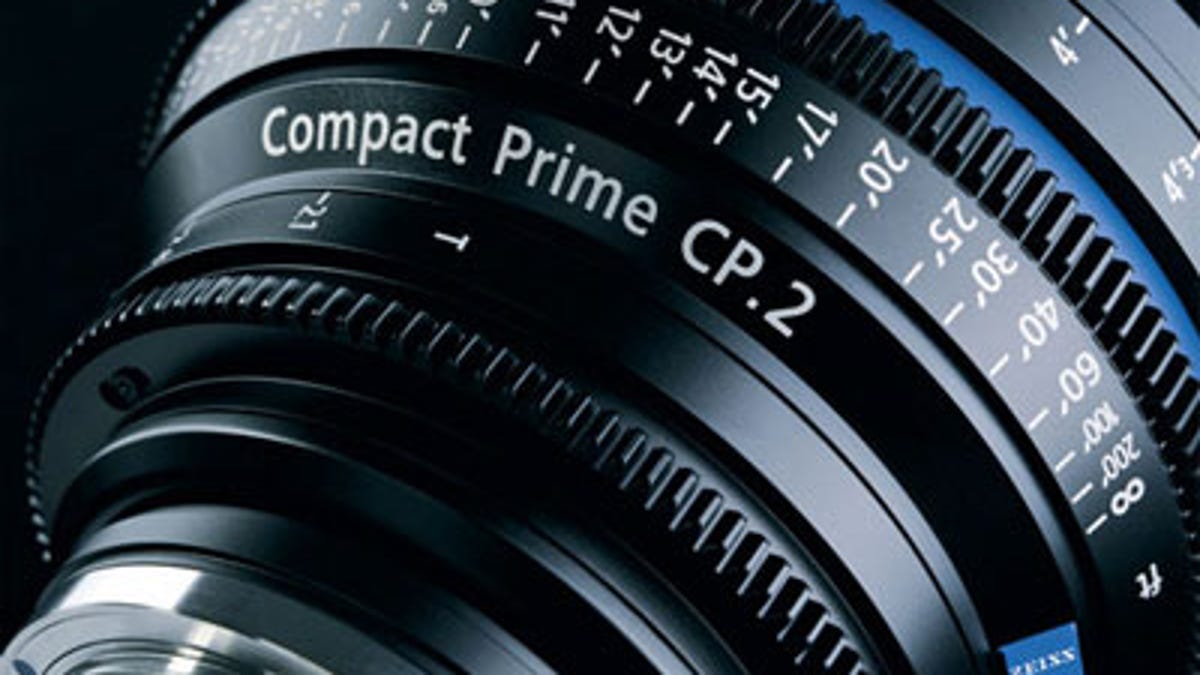Zeiss adapts lenses to video SLR era
The Compact Prime CP.2 family gets new 50mm and 100mm members and the ability to mount to Nikon SLRs. Also: Zeiss' first accessories.

Carl Zeiss, a venerable German maker of camera lenses, is showing new ambitions by trying to tap into the market of video SLRs and by expanding into the realm of accessories.
The company has announced two new lenses in its Compact Prime CP.2 line, a second generation of hybrid lenses designed for use either on cinema cameras or on newer SLRs that can shoot video.
The new CP.2 models are a 50mm f2.1 macro with 0.24-meter close-focus distance and a 100mm f2.1 with a 0.7-meter close-focus point. The new products debuted at the IBC Conference for the media and entertainment industry.
The CP.2 models are notable for an adapter ring that makes it possible to fit the lens to a variety of camera bodies--initially those using Canon's EF mount and the PL (positive lock) mount used in filmmaking circles. Now Zeiss has released an adapter that lets the lenses attach to the F mount of Nikon SLRs as well. That helps with photographers or videographers who might have a variety of cameras in use.
In addition, Zeiss "soon" plans to expand to the Micro Four Thirds lens mount used by new Panasonic and Olympus cameras and to the Sony Alpha mount. One point worth mentioning: it's easier to span all these camera body styles because because cinema users rely on manual focus; Zeiss's CP.2 lenses don't have the electronic links necessary for autofocus and other camera communications.
The CP.2 lenses use the same optical formulas as the company's other lenses, but are particularly suited to cinema purposes. For example, all the models except the new 100mm macro lens have the size lens barrel for easier interchangeability when mounted in a camera rig. And they have a higher-precision focusing ring that travels 300 degrees, a silently changing aperture setting, a 14-blade aperture for more pleasing bokeh in out-of-focus areas, and gearing for attachment of follow-focus equipment and other external apparatus.
The CP.2 line isn't cheap, with an average price of $3,900, but the lenses are less expensive than the other cine lenses of Zeiss' Ultra Prime and Master Prime lines.
Zeiss also has expanded beyond its core lens products to accessories. First up are polarizing and ultraviolet filters with diameters of 58mm, 67mm, 72mm, and 82mm. Second is a padded camera strap with quick-release buckles.
Also, earlier this month, Zeiss announced a new member of its more photography-oriented lenses, the Distagon T* 1,4/35 ZE, a 35mm f1.4 lens with a cost of about $1,700. It has a close-focus distance of 0.3 meters (11.8 inches), 11 lens elements, and a weight of 850g (1.9 pounds).

